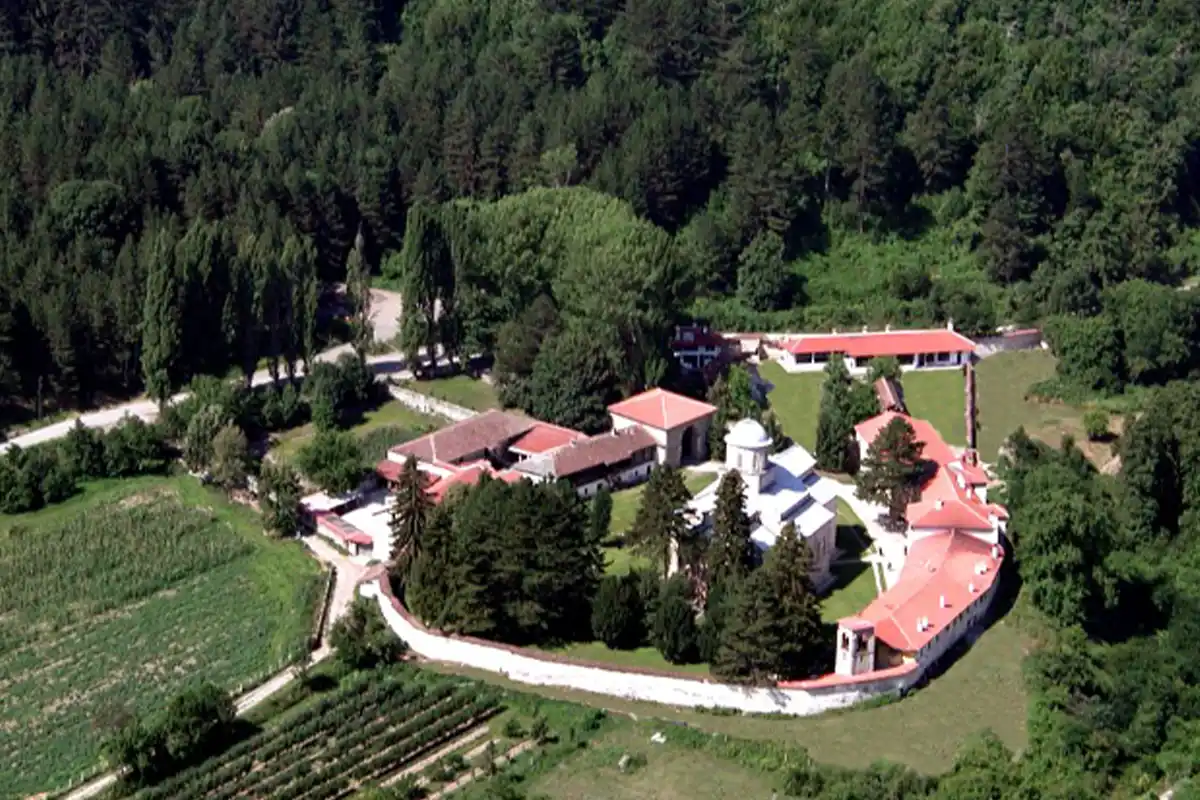
Key Takeaways
- Deçan Monastery is a UNESCO World Heritage Site renowned for its Romanesque-Gothic architecture and rich artistic heritage.
- *Founded in 1327* by King Stefan Uroš III Dečanski, it reflects a blending of Western and Byzantine artistic influences.
- Its frescoes depict biblical scenes and Serbian rulers, standing as some of the most important examples of medieval Byzantine art in the Balkans.
- The monastery has faced various challenges over centuries, including threats during the Ottoman era, World War II, and the post-Kosovo conflict period.
- Today, it remains a vital religious and cultural site, symbolizing Serbian heritage and spiritual identity in Kosovo.
Table of contents
- Introduction to Deçan Monastery: Historical and Cultural Significance
- History of Deçan Monastery: Origins and Key Events
- Architectural Features: Deçan Monastery’s Unique Design and Artistry
- Cultural and Religious Significance: The Heartbeat of the Community
- Visiting Deçan Monastery: Practical Information and Nearby Attractions
Introduction to Deçan Monastery: Historical and Cultural Significance
Deçan Monastery, also known as Visoki Dečani Monastery, holds a prominent place in the history of the Serbian Orthodox Church. Situated near the town of Dečani in western Kosovo, this spiritual edifice embodies a rich blend of history, art, and culture.
As a UNESCO World Heritage Site, it signifies more than just religious importance—it’s a symbol of cultural resilience and historical continuity. The monastery stands as a testament to the complex past of the Balkans, weaving religious traditions with architectural innovation. Its location in Kosovo adds layers of cultural resonance, especially considering regional interactions between Serbian and Albanian communities.
History of Deçan Monastery: Origins and Key Events
Origins and Founding by King Stefan Uroš III Dečanski
The story begins in 1327, when King Stefan Uroš III Dečanski undertook the construction of the monastery. Designed under the guidance of architect Fra Vita from Kotor, the monastery’s architecture beautifully merges Romanesque and Gothic styles. The name ‘Deçan’ honors the king, highlighting its royal patronage and spiritual significance. Completed by his son, Stefan Dušan, in 1335, the monastery became a center of religious life and artistic innovation.
Historical Timeline: Ottoman Period and Beyond
Throughout the centuries, Deçan Monastery endured numerous challenges, including Ottoman rule and regional conflicts. Despite threats, it maintained its religious function, thanks in part to protections granted during the Ottoman era. During World War II, the site faced destruction threats but survived. After the Kosovo War, it came under the protection of KFOR forces. Its designation as a UNESCO World Heritage in 2004 has been instrumental in safeguarding its legacy, even as threats persisted, leading to its listing as a site in danger.
Role in Albanian Religious and Cultural History
Historically, the region around Deçan was ethnically diverse, with both Serbian and Albanian populations. The monastery served not just as a religious sanctuary but also influenced local economies and cultural exchanges. Its archives and frescoes offer insights into inter-ethnic interactions, reflecting both cooperation and conflict. These historical layers highlight the monastery’s integral role in regional religious and cultural dynamics.
Architectural Features: Deçan Monastery’s Unique Design and Artistry
Romanesque-Gothic Architecture and Fortified Walls
The monastery stands out for its Romanesque and Gothic architecture, a rare combination in Balkan monasteries. Designed by Fra Vita, its facade features white and reddish-brown marble, creating a distinctive aesthetic. The main church, dedicated to Christ Pantocrator, is encircled by strong fortified walls, hinting at its historical role as a refuge during turbulent times.
Artistic Elements: Frescoes, Sculptures, and Byzantine Art
The monastery houses over 1,000 frescoes depicting biblical scenes and Serbian rulers, making it a treasure trove of medieval Byzantine art. Its sculptures and stone carvings showcase intricate religious motifs that exemplify high craftsmanship. Additionally, the treasury contains icons, manuscripts, and artifacts that testify to its cultural importance, drawing art scholars from around the region.
Distinguishing Characteristics: A Legacy of Preservation
What makes Deçan Monastery unique is its architectural blend and the meticulous preservation of its frescoes. Unlike other Serbian monasteries that are mainly Byzantine, Deçan’s integration of Romanesque-Gothic influences sets it apart. Its ties to European artistic trends via Fra Vita exemplify the cultural exchange during its construction, adding to its historical significance.
Cultural and Religious Significance: The Heartbeat of the Community
Local Importance: Spiritual Center and Cultural Heritage
Today, Deçan Monastery remains a living religious community and an essential symbol of Serbian culture in Kosovo. It continues to host pilgrims and scholars, serving as a spiritual and cultural hub. The monastery stands as a resilient monument of Serbian identity, especially significant in a region marked by political and social complexities.
Religious Services and Monastic Life: A Tradition Continued
The monks uphold centuries-old traditions through regular services, maintaining the monastery’s spiritual vitality. This ongoing monastic life exemplifies the enduring faith of the Serbian Orthodox community and preserves ancestral practices, making it a pilgrimage site and a beacon of hope and continuity.
UNESCO World Heritage Site: Recognition and Challenges
Recognized globally in 2004, Deçan Monastery’s UNESCO status emphasizes its universal value. However, security issues and regional tensions pose ongoing challenges. International organizations and Kosovo authorities work collaboratively to protect and preserve this invaluable site as part of the World Heritage network, ensuring its legacy endures for future generations.
Visiting Deçan Monastery: Practical Information and Nearby Attractions
Location and Access: How to Get to Deçan Monastery
The monastery is located near the town of Deçan in western Kosovo. Access can be challenging due to regional security measures; travelers are advised to plan ahead, use guided tours, or consult local transportation providers. Travel through Kosovo involves coordination with authorities and adhering to security protocols, which are in place to ensure visitor safety. For detailed guidance, refer to U.S. Department of State travel advisories.
Visitor Guidelines and Optimal Visit Times
The best times to visit are spring (April to June) and autumn (September to November) when weather is mild. Visitors should wear modest clothing and behave respectfully due to the sacred nature of the site. Photography may be restricted; check with local guides or authorities beforehand. An atmosphere of reflection and reverence enhances the experience of this spiritual monument.
Nearby Attractions: Complementing Your Itinerary
Close to Deçan Monastery, explore the Peja Patriarchate for further insights into regional religious history. The Rugova Gorge offers stunning natural scenery, hiking trails, and outdoor activities that beautifully complement the cultural visit. Combining these sites provides a comprehensive experience of Kosovo’s spiritual and natural landscape.
Conclusion: Embracing the Legacy of Deçan Monastery
Deçan Monastery is a magnificent testament to Balkan history, architecture, and spirituality. Its unique fusion of Romanesque and Gothic styles, along with its extraordinary collection of frescoes, exemplifies how cultural exchanges shape historical sites. As a UNESCO World Heritage Site, it embodies a legacy of resilience and identity that transcends political and regional boundaries.whc.unesco.org/en/list/724
If you are keen to explore more about Balkan history or religious heritage, consider visiting similar sites like the Visoki Dečani Monastery for profound insights into the region’s cultural fabric. Remember to check current travel and safety information before planning your journey. Your visit will not only be a journey through history but also a step closer to understanding the enduring spirit of this remarkable monument.


0 Comment